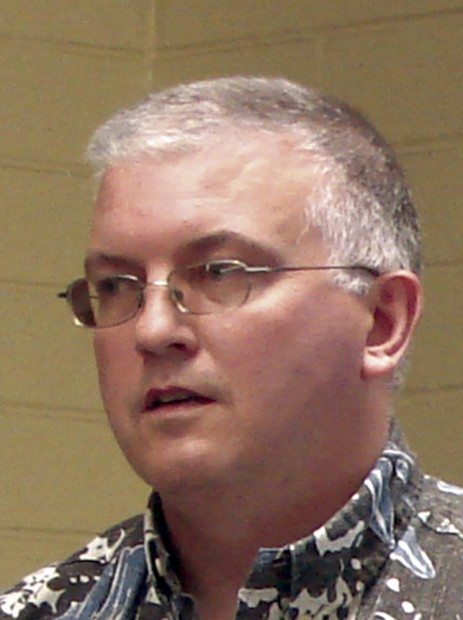KAPA‘A — Continued conversion to renewable energy to offset oil costs was the focus of the KIUC quarterly update. Approximately 30 people attended the meeting Thursday night at the Kapa‘a Public Library. KIUC President and CEO David Bissell’s presentation focused
KAPA‘A — Continued conversion to renewable energy to offset oil costs was the focus of the KIUC quarterly update.
Approximately 30 people attended the meeting Thursday night at the Kapa‘a Public Library. KIUC President and CEO David Bissell’s presentation focused on capital projects that will yield a return in the lower cost per kilowatt-hour in the long run. “We’re excited about that, and I think it is a good use of our loan funding,” he said.
The projects include a photovoltaic plan that is currently in the environmental assessment phase. KIUC plans to finance to own the 12 megawatt project that ultimately would provide 5 percent of the island’s energy supply.
The project will mirror the 12 megawatt project in Anahola, Bissell said. It is the final piece of a $68 million reclassification of Department of Agriculture funding that had been designated for fossil fuel generation.
When completed, Bissell said the solar farms would produce about 22 megawatts of Kaua‘i-produced renewable generation at substantially less cost than oil. Coupled with about six megawatts from battery storage systems, he said this funding has helped add about 8 percent of the island’s energy needs.
This week, the board will update hydroelectric project plans for Kekaha, the Kalepa lands and along the Wailua River, a small project in Anahola and another in Hanalei.
“We are excited about hydro as we are with PV (photovoltaic),” Bissell said.
“We have a stated renewable goal of 50 percent by 2023. We are well on our way to that part and we already have interactive development enough projects between hydro, biomass and solar to get to at least 50 percent,” Bissell said.
Bissell said that success in renewable efforts and in lowering energy use through home efficiency will move KIUC away from paying high oil costs.
“Every renewable project on Kaua‘i is forecast to be cheaper than what we are paying Chevron right now for oil,” he said.
Whether Kaua‘i utility customers can opt out of the planned smart meter installation also was addressed at the meeting.
Residential installation is set to begin in late April or early May. Bissell said a deferral plan would allow residents to opt out by contacting KIUC within two weeks from the notice of installation.
“I want to be very clear, we’re not going to do forcible installation of the meters,” Bissell said. “If you don’t want them, they are not going to go on for now.”
Around 500 volunteers are sought to take part in an in-home display pilot program. This allows the homeowner to view electricity use inside the home with the smart meter.
Power supply manager Brad Rockwell spoke about a 30-acre algae pond research project adjacent to the Kapa‘ia Power Station.
The dried and pressed algae is sent to the Mainland for processing into jet fuel. If proven to be an efficient and cost-effective approach to a viable fuel, then production and acreage will expand, meeting participants were told.
• Tom LaVenture, staff writer, can be reached at 245-3681 (ext. 224) or tlaventure@ thegardenisland.com.


